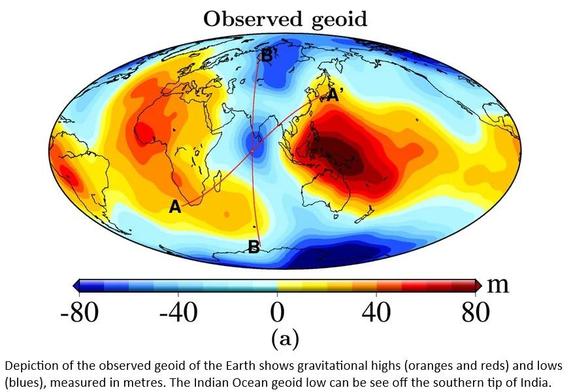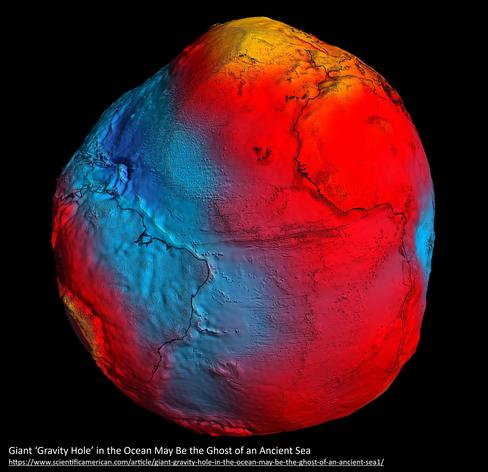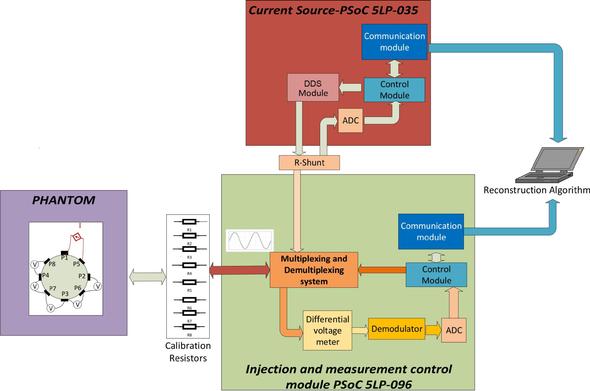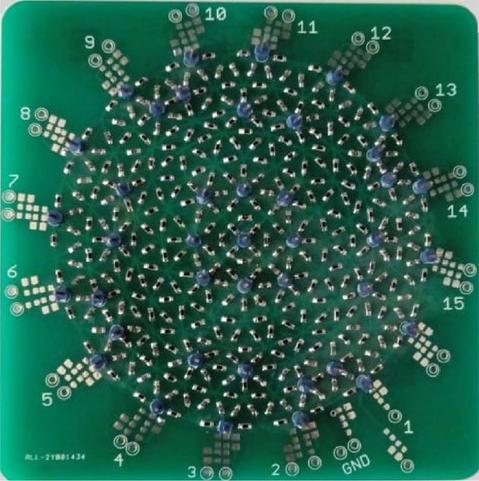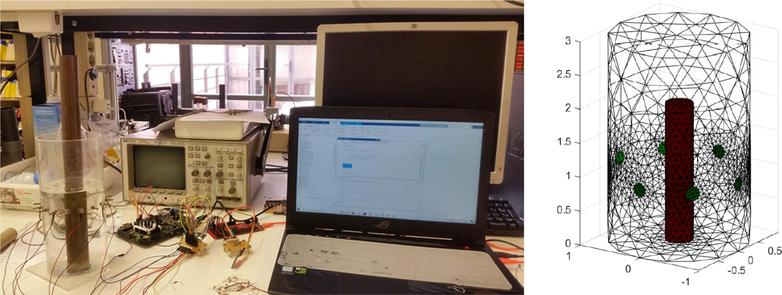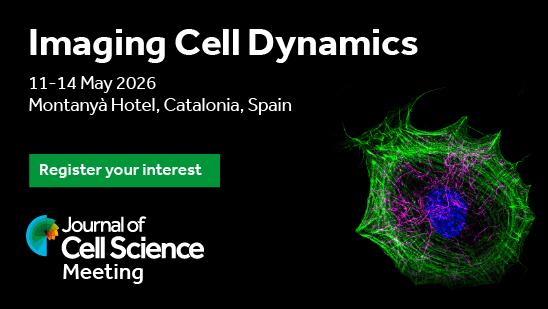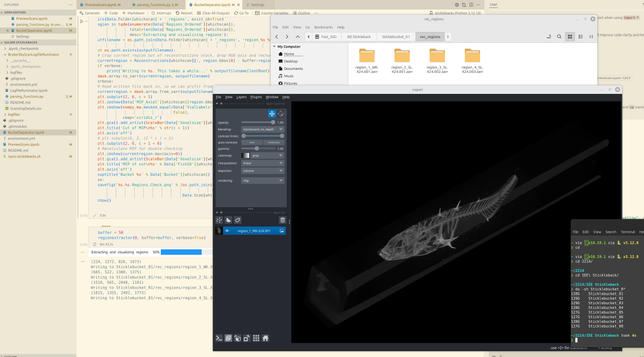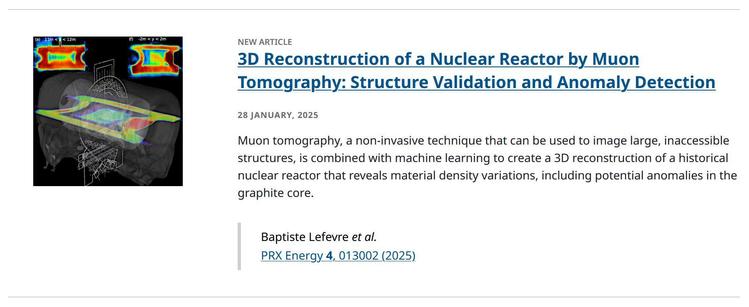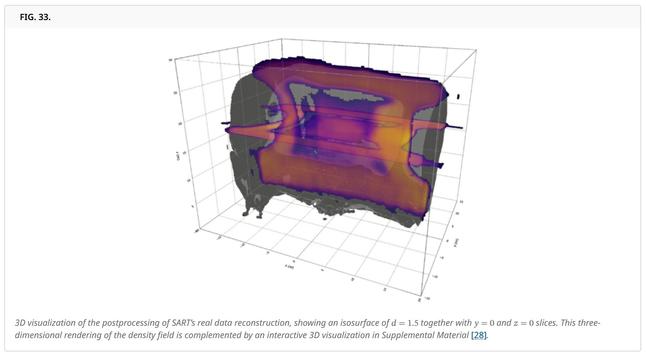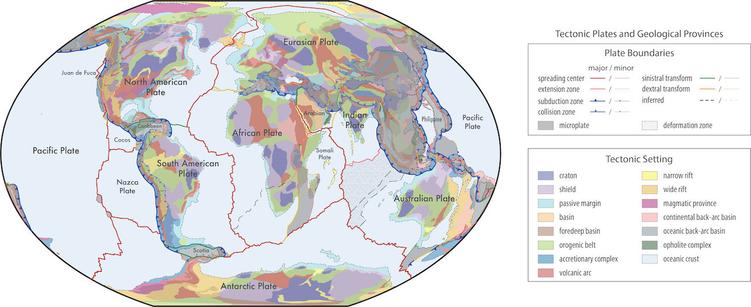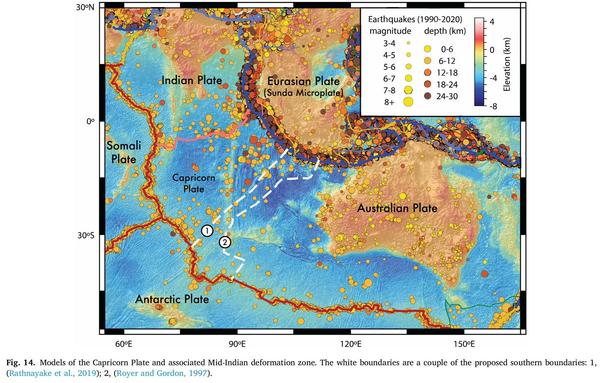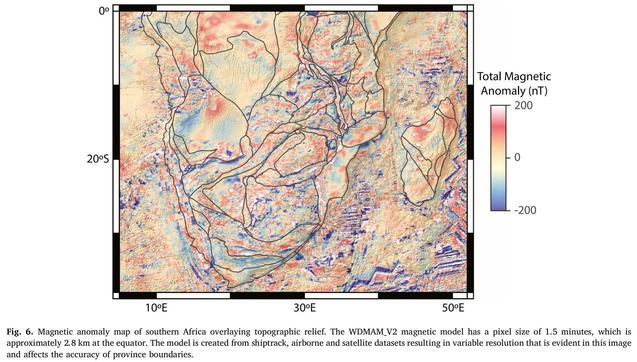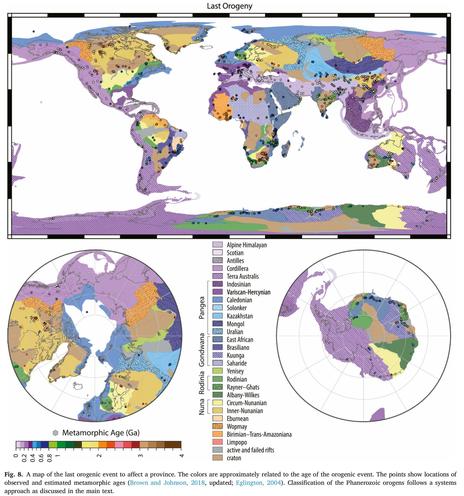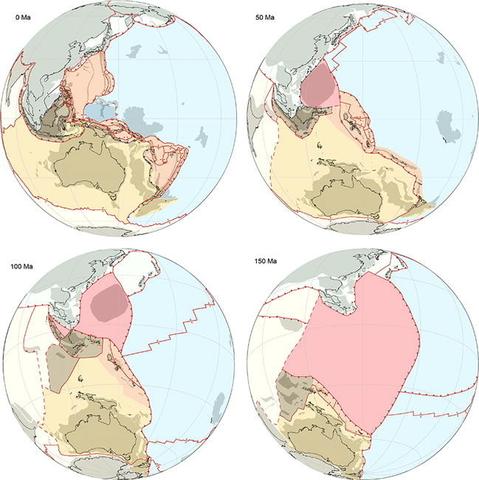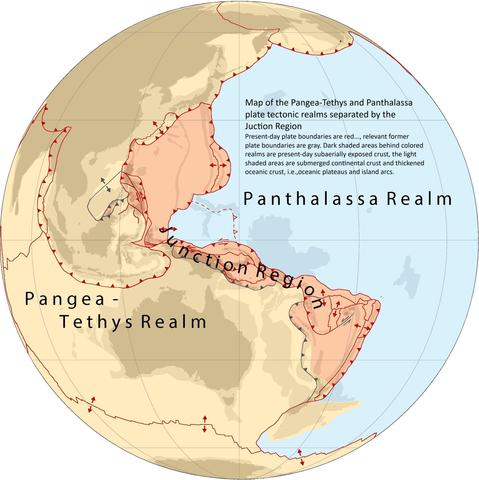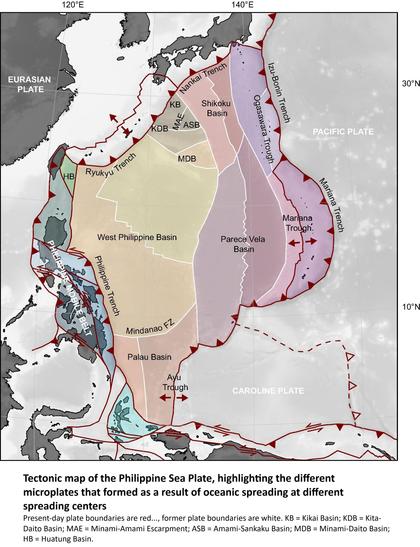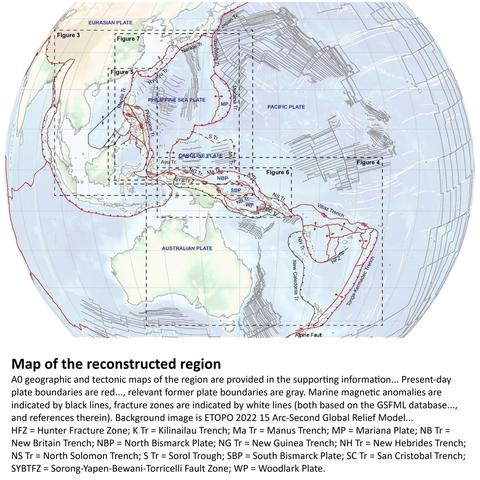This book presents a comprehensive exploration of moiré #tomography and its application to structural visualization and key-parameter diagnosis in high-temperature complex flow fields.
More info : https://buff.ly/D8vZCSD
#Tomography
Giant ‘Gravity Hole’ in the Ocean May Be the Ghost of an Ancient Sea
--
https://www.scientificamerican.com/article/giant-gravity-hole-in-the-ocean-may-be-the-ghost-of-an-ancient-sea1/ <-- shared technical media article
--
https://doi.org/10.1029/2022GL102694 <-- shared 2023 paper
--
https://oceanservice.noaa.gov/facts/geoid.html <-- technical description of a geoid
--
[theories abound]
"... KEY POINTS
• Employing time dependent global mantle convection models since the Cretaceous. [the authors] simulate the origin of the enigmatic Indian Ocean geoid low
• Plumes forming along the edges of the African Large Low Shear Velocity province (LLSVP) control the regional geoid in the Indian Ocean
• These plumes, in turn are generated by lower mantle Tethyan slabs that perturb the African LLSVP…”
#GIS #spatial #mapping #geoid #gravity #mapping #global #remotesensing #plume #ocean #ancientocean #gravityhole #geophysics #IndianOcean #geology #structuralgeology #crust #mantle #core #high #low #potsdamgravitypotato #IOGL #tomography #model #modeling #plate #tectonicplate #Tethys #slab #mantleplume #LLSVP #AfricanLargeLowShearVelocity
Sept 11: Christoph Lerche (@fzj) on tomographic reconstruction in MRI, CT & PET. Understand the fundamentals behind 3D medical images.
Register for the series 👉 https://bit.ly/6-image-processing-tasks
8-channel high-speed #OpenSource #electrical #impedance #tomography device implemented on a programmable #system-on-a-chip:
#EIT is a non-invasive #imaging technique providing info about the internal #conductivity distribution of a body/object
https://doi.org/10.1016/j.ohx.2025.e00667
#DIYbio #lab #instruments #SoC
Following on from their successful meeting in 2023, @J_Cell_Sci are delighted to announce a second iteration of the Imaging Cell Dynamics Meeting to be held in 2026.
Find out more:
https://www.biologists.com/meetings/jcsimaging/
#Cells #CellDyamics #CellScience #Imaging #JCS #Microscopy #SuperResolutionImaging #ElectronMicroscopy #Tomography #ExpansionMicroscopy #OrganelleDynamics #MembraneTrafficking #CytoskeletalDynamics #TissueDynamics #ImageAnalysis #LightMicroscopy #Microscope
✨ Ever wondered how to effortlessly apply lazy expressions to massive tomographic HDF5 datasets and visualize them instantly in Cat2Cloud? 🤯
🎬 Check out this fantastic new video from our very own Luke Shaw! Discover how a bit of Python 🐍 magic and our user-friendly web interface simplify the process.
👇 Watch the full video to see the magic unfold: https://ironarray.io/cat2cloud
#HDF5 #Tomography #LazyEvaluation #DataVisualization #Cat2Cloud
is happy to have spent *so much* time on automated extraction of single fish from 20 combined tomographic scans (20 x 6 fish) a while ago. Because re-doing this on a fresh TB batch of 8 scans (48 fish) of nearly equal fish is done in half a morning. See https://github.com/habi/sticklebacks for the #Jupyter notebooks. #tomography #ecology
Biomass - ESA's Forest Mission – Mapping Biomass From Space - Overview Video
--
#GIS #spatial #mapping #biomass #satellite #remotesensing #earthobservation #spatialanalysis #spatiotemporal #vegetation #forest #radar #canopy #tomography #imaging #geomorphometry #forests #carbon #carbonaccounting #climatescience #management #planning #ecosystems #ESA
Biomass - ESA's Forest Mission – Mapping Biomass From Space
--
https://www.esa.int/Applications/Observing_the_Earth/FutureEO/Biomass <-- shared Biomass information hub
--
#GIS #spatial #mapping #biomass #satellite #remotesensing #earthobservation #spatialanalysis #spatiotemporal #vegetation #forest #radar #canopy #tomography #imaging #geomorphometry #forests #carbon #carbonaccounting #climatescience #management #planning #ecosystems
#ESA
is happy to hear that https://doi.org/10.1101/2024.11.10.622888 “has been judged scientifically suitable for publication" in PLOS One after a round of peer review. Once "it meets all outstanding technical requirements" it will be published online. For the moment you all have to read the bioRxiv version. And can nonetheless already look into the full dataset yourself, for example at https://webknossos.org/links/U8wuIdhmfzWMr7rm
A $100 DIY muon tomographer
https://spectrum.ieee.org/diy-muon-tomography
#ycombinator #arduino #geiger_counter #muons #remote_sensing #tomography #type_departments
$100 Muon Detector Lets You Harness the Cosmos
https://spectrum.ieee.org/diy-muon-tomography
#ycombinator #arduino #geiger_counter #muons #remote_sensing #tomography #type_departments
In unserer onlinenen #Ringvorlesung heute:
Basics of #XRay #Imaging and Computed #Tomography #CT
15:30 Uhr mit @mosterh1 von der @unigoettingen
Einwahl: https://kit-lecture.zoom-x.de/j/65527468773?pwd=axMdaXp5Jebvan8TVz9qbo4bkL3MHl.1
Kenncode: whsj=71J
New paper, just published in Physical Review X Energy, on the muography of the G3 nuclear reactor
by Baptiste Lefevre and co-authors
https://doi.org/10.1103/PRXEnergy.4.013002
The visualization software I developed for #Cosmology contributed in the mapping of the inner, inaccessible structure of the reactor.
▶️ see the video and interactive visualization here: https://journals.aps.org/prxenergy/abstract/10.1103/PRXEnergy.4.013002#supplemental
#Physics #Muography #Nuclear #NuclearReactor #science #STEM #engineering #Energy #G3 #Muons #MuonTomography #tomography
Gleich beginnt die nächste Postersitzung beim #DESY Nutzerinnentreffen #UM25 – mein heutiger Beitrag:
"#FPGA Based Live-Reco for #Tomography: Preparing for 4th Generation Data Rates"
Mit dem Upgrade zum #PetraIV #Synchrotron erwarten wir eine rund hundertfach höhere Datenrate, speziell in der Parallelstrahl-#Tomografie an der #GINIX könnten es ca. 3 Petabyte täglich werden. Hier studieren wir eine Live-Rekonstruktion des Datenstroms mittels programmiererbarer Hardware.
Atop The Oregon Cascades, [Research] Team Finds A Huge Buried Aquifer
--
https://www.eurekalert.org/news-releases/1069774 <-- shared technical article
--
https://doi.org/10.1073/pnas.2415155122 <-- shared paper
--
https://www.usgs.gov/centers/oregon-water-science-center/science/mckenzie-river-source-water-study <-- shared USGS technical article, 2011, ‘McKenzie River Source Water Study’
--
https://youtu.be/6R8e5HwGMwU?si=sniW4bvvzzviTYie <-- shared media video overview
--
#GIS #spatial #mapping #model #modeling #water #hydrology #Oregon #Cascades #CascadeMountains #PNW #PacificNorthwest #volcanic #rocks #aquifer #waterresources #watermanagement #climatechange #snowpack #drought #spatialanalysis #CriticalZone #geohazards #geology #engineeringgeology #landscapes #weathering #bedrock #holocene #groundwater #structuralgeology #orogeny #remotesensing #geophysics #sampling #drilling #porosity #permability #tomography #lava #spring #seep #breccia #discharge #streams #runoff #precipitation #climate #rainfall #recharge
These Revolutionary Maps Are Revealing Earth’s Geological Secrets
--
https://www.zmescience.com/science/tectonic-model-beatiful-new/ <-- shared technical article
--
https://doi.org/10.1016/j.earscirev.2022.104069 <-- shared paper
--
#GIS #spatial #mapping #tomography #geology #remotesensing #structuralgeology #plates #platetectonics #earth #global #model #modeling #opendata #opensource #spatialdata #vector #platemodel #mechanics #GPS #earthquakes #volcanoes #topography #orogeny #tectonics #spatiotemporal #spatialanalysis #Pangea #Gondwana #Gondwanaland #ReuniteGondwanaland #Laurasia #lithosphere #crust #mantle #core #geophysics #geochemistry #geochronology #dating #Mesoproterozoic
#OPTImAL: #Optical projection #tomography implemented for #OpenSource accessibility & low cost:
-#LED excitation
-#motorized rotation stage
-#GPU-based #image reconstruction (#MATLAB/#ASTRA)
https://doi.org/10.1098/rsta.2023.0101
#DIYbio #lab #instruments #fluorescence #imaging #MicroManager
Geologists Stunned On Discovering A Part Of The Earth That Disappeared 20 Million Years Ago
--
https://www.good.is/geologists-stunned-at-discovery-of-earths-ancient-mega-plate-they-didnt-know-about-at-all-ex1 <-- shared technical article
--
https://doi.org/10.1016/j.gr.2023.09.013 <-- shared paper
--
https://youtu.be/VyEUWySaFPc?si=rzUiIh14GxmiC0l- <-- reconstruction animation
--
#GIS #spatial #mapping #remotesensing #geomagnetism #argoland #kinematicreconstruction #platetectonics #GPlates #junctionregion #PhilippineSeaPlate #Borneo #NewZealand #Japan #Zealandia #Philippines #NewGuinea #junction #subduction #plates #geology #structuralgeology #pontus #pontusplate #paeleogeography #geologichistory #Zealandia #seismology #spatialanalysis #spatiotemporal #tomography #model #modeling
Researchers explore a #single_cell using advanced #X_ray imaging techniques.
#tomography #fluorescence #microscopy
https://phys.org/news/2024-07-explore-cell-advanced-ray-imaging.html

